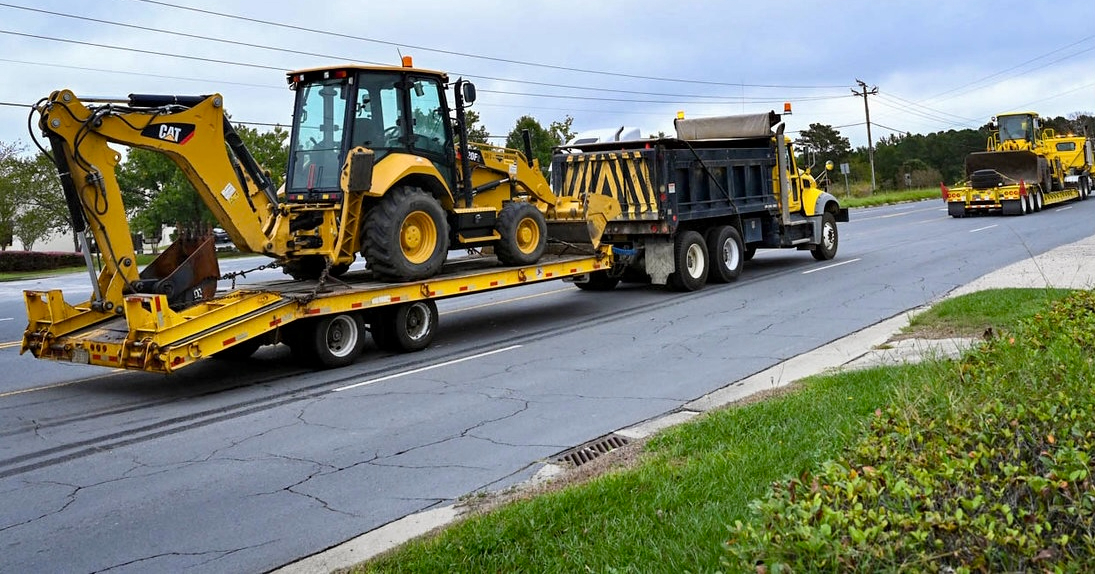
NCDOT Makes Steady Progress on Road Repairs Following Hurricane Helene
North Carolina -- October 15, 2024: The North Carolina Department of Transportation (NCDOT) crews and contractors
have made significant strides in reopening over 600 roads across the state as part of ongoing recovery efforts following the devastation caused by Hurricane Helene. The hurricane hit North Carolina on September 26-27, leaving unprecedented damage in its wake, particularly in Western North Carolina.
NCDOT workers have almost completed the first phase of operations, which involved cutting and clearing debris from roadsides, creating more than 4,100 debris sites. “The damage to our roads and bridges is unlike anything we’ve ever seen after a storm,” said state Transportation Secretary Joey Hopkins. “It’s going to be a long-term recovery, but we’re committed to being here until Western North Carolina can fully recover.”
Progress Across Western North Carolina
Since the hurricane passed, NCDOT has reopened major roads including Interstate 40 near Old Fort and downtown Asheville, as well as I-26 in Henderson and Polk counties. Other reopened routes include U.S. 221, U.S. 321, U.S. 421 near Boone, and U.S. 70 and U.S. 25 in Asheville.
Despite this progress, challenges remain. NCDOT has identified over 6,900 damaged sites across the state, including nearly 600 road closures. Major thoroughfares like I-40, U.S. 64, and U.S. 19 are still affected, with the number of closures expected to rise as further assessments continue.
Efforts to stabilize I-40 in the Pigeon River Gorge are well underway, with NCDOT awarding a $10 million contract to Wright Brothers Construction to complete repairs by January 4. Coordination with Tennessee and the Federal Highway Administration will guide long-term reconstruction efforts.
Power Restoration and Road Clearance Continue
As of Monday, power outages in Western North Carolina have dropped from over 1 million to about 19,000, thanks to the combined efforts of NCDOT and utility companies working to reopen roads. The goal is to restore power as quickly as possible by ensuring access to damaged areas.
Some NCDOT teams are now shifting from debris clearance to reconstruction, although progress varies by county based on the level of damage. Certain areas remain difficult to access due to extensive road and bridge damage.
Thousands of NCDOT Employees Responding
More than 2,000 NCDOT employees are actively involved in recovery operations. This includes 1,700 field workers using equipment like dump trucks and backhoes to clear roads, as well as over 230 employees from eastern and central North Carolina who were deployed to assist in the hardest-hit areas. Additionally, 50 employees from the N.C. Division of Motor Vehicles’ License and Theft Unit are providing security in seven mountain communities.
Despite the ongoing work, NCDOT is urging people not to travel in Western North Carolina unless necessary, as non-essential traffic is slowing down recovery efforts. "We need travelers to use alternate routes outside of the impacted areas to avoid disrupting recovery operations," Hopkins emphasized.
Truckers are also being asked to avoid routes near the Tennessee border that are not suitable for long vehicles, with NCDOT providing detour information through wireless alerts and digital road signs.
Aerial Support and Emergency Supplies
NCDOT’s Division of Aviation has played a crucial role in the disaster response, coordinating over 250 flight missions to deliver emergency supplies and capture aerial images of damaged areas. This imagery is being used to guide recovery efforts and assess areas that are difficult to access by road.
The Division has also supported the N.C. National Guard in search and rescue operations and the delivery of more than 3 million pounds of food, water, and supplies to isolated communities. As of Monday, NCDOT had mobilized 30 aviation personnel to assist general aviation airports handling increased air traffic.
The recovery from Hurricane Helene will be a long process, but NCDOT remains committed to restoring infrastructure and helping Western North Carolina recover.
WNCTimes
Image: NCDOT


 How to resolve AdBlock issue?
How to resolve AdBlock issue? 